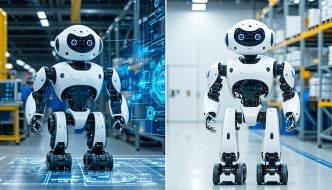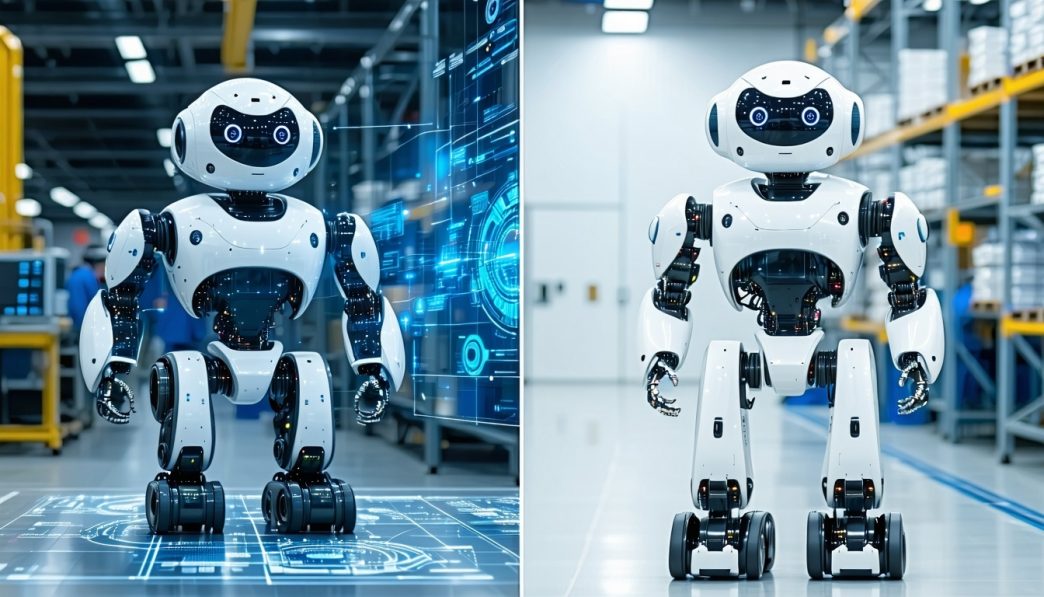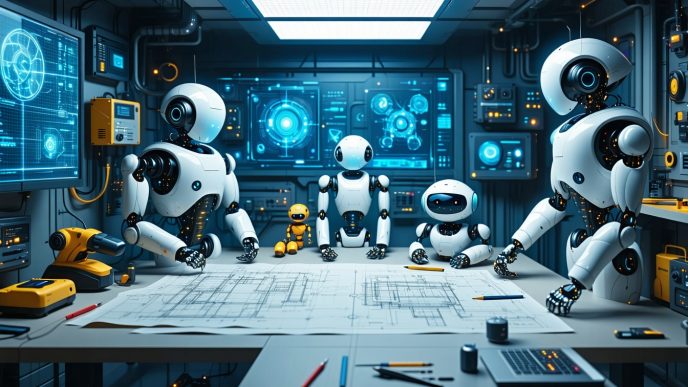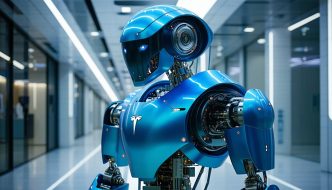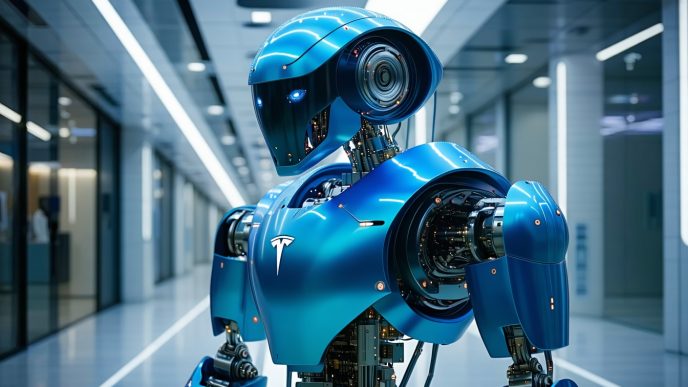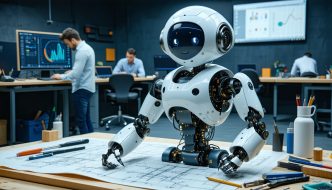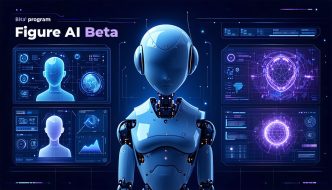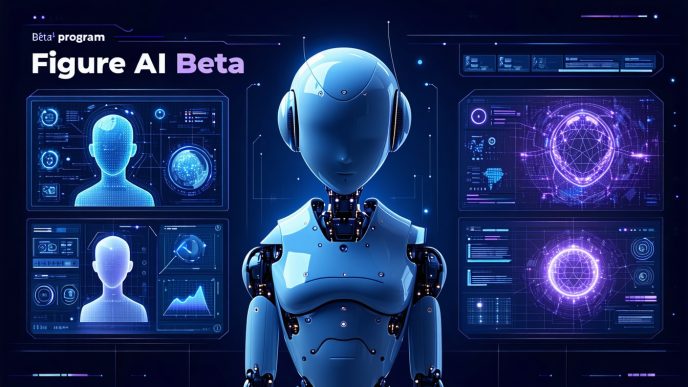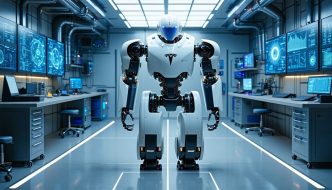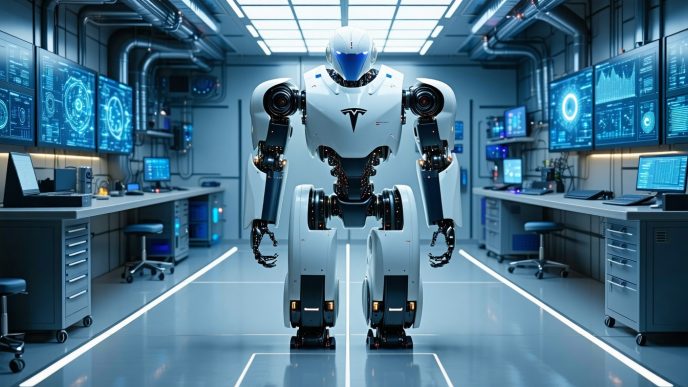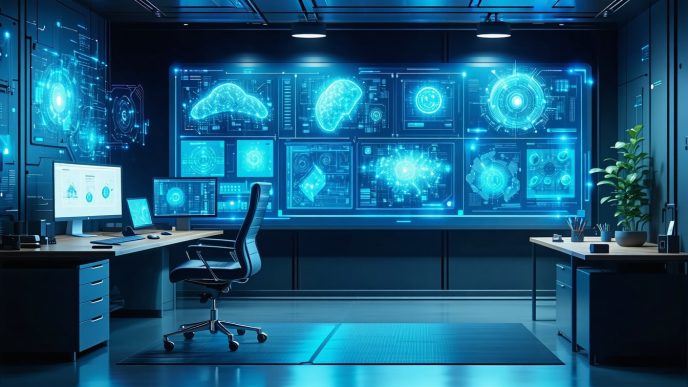The Evolution of Robots
The journey of robots from initial concepts to final products is a captivating process that highlights innovation in technology. Understanding how these machines evolve can provide insights into the distinctions between prototype and production robots.
From Prototype to Production
Prototype robots serve as the first iterations in the development phase. They allow engineers to test new ideas and functionalities without committing to full-scale production. Prototypes are often used in experimentation and are subject to frequent changes based on testing results and user feedback.
In contrast, production robots are the refined versions ready for consumer use. They incorporate improvements from the prototype phase, including better design, enhanced functionalities, and reliable performance. This transition from prototype to final product is essential in ensuring that the robots meet market demands and safety standards.
| Stage | Key Characteristics |
|---|---|
| Prototype | Experimental, high variability, testing features |
| Production | Market-ready, stable features, improved reliability |
Understanding the Development Process
The development process of robots involves multiple phases, including ideation, design, testing, and validation. Each phase is crucial in refining the robot’s capabilities and addressing any identified issues.
-
Ideation: Engineers brainstorm concepts based on market trends and technological advancements. This stage focuses on identifying potential functionalities and applications of the robot.
-
Design: After ideation, detailed designs are created. This includes specifications for hardware and software components. Mock-ups and early-stage models are typically produced for visualization.
-
Testing: Prototypes undergo rigorous testing to evaluate performance metrics. This phase focuses on identifying strengths and weaknesses, particularly in functionality and user experience. Insights gathered during testing often lead to crucial adjustments.
-
Validation: Once testing is concluded, validation ensures that the robot meets necessary regulatory and safety standards. This step is critical for transitioning from a prototype to a production model, as it ensures reliability and compliance with industry norms.
The entire development process emphasizes collaboration among engineers, designers, and stakeholders, driving innovation in robotics. For further exploration of innovative robot designs, including robot prototypes and betas, visit our other resources on the latest developments in this field.
Design Differences
Understanding the distinctions between prototype and production robots is essential for those in the robotics field. This section explores two critical design aspects: physical appearance and functional capabilities.
Physical Appearance
The physical characteristics of robots can vary significantly between their prototype and production iterations. Often, prototypes are built with functionality in mind rather than aesthetics. They may sport a more industrial look, with exposed wiring and utilitarian materials. Production robots, on the other hand, are usually designed with customer appeal and branding considerations in mind.
| Feature | Prototype Version | Production Version |
|---|---|---|
| Surface Finish | Rough, unfinished | Polished, sleek |
| Size and Scale | May vary significantly | Consistent, standardized |
| Material Quality | Basic, less durable materials | High-quality, durable materials |
| Color Schemes | Often neutral or monochrome | Varied, often brand-specific |
The finished versions aim for a more refined look as they prepare for market entry. This shift towards a polished aesthetic is appealing to consumers and enhances brand recognition.
Functional Capabilities
Functionality is perhaps the most crucial difference between prototype and production robots. Prototype robots often focus on testing core functions and features, which may lead to limitations in their overall performance and utility. Production robots are designed with enhanced capabilities, ready for practical application in specific environments.
| Capability | Prototype Version | Production Version |
|---|---|---|
| Task Efficiency | Basic task performance | Optimized for task efficiency |
| Customization Options | Limited feature sets | Expanded customization features |
| Robustness | May face multiple failures | Designed for reliability |
| Real-World Adaptation | Primarily lab-tested | Tested in real-world scenarios |
Production robots typically exhibit superior robustness and operational capacity, ensuring they meet market demands. Improvements made during the transition from prototypes to final versions may include advanced software algorithms and refined hardware designs. For more insights into the various stages of robot development, explore our article on robot prototypes and betas.
Technology Variances
As robots transition from prototype stages to final production, significant differences can be observed in software integration and hardware enhancements. These variances play a crucial role in determining the overall functionality and market viability of robotic systems.
Software Integration
In the prototype phase, software integration is often experimental. Prototypes commonly run on early versions of software that may lack features or exhibit bugs. Developers use this period to test algorithms and gather data to refine the coding for improved performance.
In production robots, the software is typically more robust, featuring stable versions of algorithms and user interfaces that have undergone rigorous testing. Final versions integrate feedback from beta testing, ensuring a seamless user experience.
| Aspect | Prototype Software | Production Software |
|---|---|---|
| Stability | Often unstable with bugs | Stable and reliable |
| Features | Limited and experimental | Enhanced with user feedback |
| Updates | Frequent and developmental | Regular but tested for reliability |
This software evolution is essential in enhancing the robot’s operational reliability and user satisfaction. For more on current updates in robotics, consider our resource on robot prototypes and betas.
Hardware Enhancements
Hardware advancements can also significantly differentiate prototype and production robots. During the prototype phase, materials may vary widely as engineers test different configurations for durability and effectiveness. For instance, early versions might utilize cheaper materials for quick testing and validation.
In contrast, production robots are manufactured using high-quality components designed for longevity and efficiency. These enhancements often include:
- Upgraded sensors for better perception
- Improved motors for increased power and speed
- Enhanced battery life for longer operational times
| Component | Prototype Hardware | Production Hardware |
|---|---|---|
| Sensors | Basic or experimental | Advanced for precision |
| Motors | Variable performance | High-efficiency models |
| Battery Life | Short duration | Optimized for longevity |
These hardware improvements contribute significantly to the overall performance and reliability of robots, ultimately determining their effectiveness in real-world applications. For insights into specific advancements, check out our articles on tesla optimus prototype updates and university robotics prototypes.
As the robotic industry continues to evolve, understanding the distinctions between prototype vs production robots helps enthusiasts and professionals alike navigate the landscape of emerging technologies.
Performance Variances
In the realm of robotics, understanding the variances in performance between prototype and production robots is crucial. These differences often manifest in speed, efficiency, accuracy, and precision, which are key factors in a robot’s functionality.
Speed and Efficiency
Speed and efficiency are critical indicators of a robot’s performance capabilities. Prototypes may showcase advanced technologies but often exhibit slower operation speeds and less efficient energy use due to ongoing adjustments and enhancements.
| Robot Type | Speed (m/s) | Efficiency (output/input) |
|---|---|---|
| Prototype | 1.5 | 75% |
| Production | 3.0 | 90% |
Production robots typically benefit from refined algorithms and optimized hardware, resulting in better speed and improved energy efficiency. Companies often focus on maximizing these metrics during the transition from prototype to final version.
Accuracy and Precision
Accuracy and precision are vital when it comes to robotic tasks, especially in applications that require detailed work, such as assembly or surgery. Prototype robots often display inconsistency in these areas as software and hardware integration evolves during development.
| Robot Type | Accuracy (percentage) | Precision (mm) |
|---|---|---|
| Prototype | 85% | ±5 |
| Production | 95% | ±1 |
The production versions employ advanced sensors and validated algorithms that enhance performance in both accuracy and precision. As a result, these robots are better equipped to perform complex tasks with minimal errors. For insights into how early developments shape these variances, see our article on robot prototypes and betas.
These performance variances between prototypes and production robots underscore the advancements made throughout the development process, illustrating the steps taken to enhance functionality before market readiness.
Testing and Validation
Testing and validation play crucial roles in distinguishing robots at the prototyping stage from final production versions. These processes ensure that the robots are equipped, tested, and prepared for market demands.
Prototyping Testing Phase
During the prototyping testing phase, robots undergo extensive evaluations to assess their design and functionality. This phase focuses on identifying issues and gathering data that can inform the development of subsequent iterations. Prototypes are typically subjected to a range of tests that include:
| Test Type | Purpose | Metrics Tracked |
|---|---|---|
| Functionality Tests | Assess core functions of the robot | Success rate, operational time |
| Stress Tests | Determine how robots perform under pressure | Resistance levels, failure points |
| Environmental Tests | Evaluate robot performance in various conditions | Temperature, humidity impact |
| User Interaction Tests | Analyze usability and interface design | User feedback, ease of use |
Data collected during this phase helps engineers refine the robot’s design, adjust functionalities, and enhance overall performance. Insights often lead to significant changes before the robot moves to final validation.
Final Version Validation
The final validation phase ensures that production robots meet industry standards and performance expectations. Here, robots are rigorously tested to confirm they function as intended and are reliable for end users. Key aspects of final validation include:
| Validation Aspect | Focus | Importance |
|---|---|---|
| Compliance Testing | Check adherence to safety and regulatory standards | Ensures safety and legality |
| Performance Benchmarking | Evaluate speed, efficiency, and accuracy | Confirms readiness for market |
| Quality Assurance | Inspect overall build quality | Reduces defect rates |
| User Acceptance Testing | Gather feedback from real users | Validates user satisfaction |
This stage solidifies the transition from prototype vs production robots by assuring that all features function optimally and meet user needs. Testing and validation are pivotal in the development lifecycle, setting the stage for successful deployment.
Advancements in testing methods, such as beta testing robots in homes, further highlight the transition from development to real-world application, showcasing how testing adapts alongside evolving robotic technology.
Functional Changes
The transition from prototype to production robots often involves significant functional changes. These changes can affect both features and performance, fundamentally altering how the robot operates in real-world applications.
Feature Additions or Removals
In the development process, some features of the prototype may be added, modified, or removed altogether before the final version is released. This can be influenced by various factors including user feedback, cost efficiency, and technical feasibility.
| Feature Type | Prototype Version | Production Version |
|---|---|---|
| Autonomous Navigation | Limited functionality | Enhanced GPS and obstacle detection |
| Interaction Capabilities | Basic voice commands | Advanced AI interaction and learning |
| Load Capacity | Up to 10 kg | Increased to 20 kg for industrial use |
Feature adjustments are critical for ensuring that the final robot meets market demands and user expectations. For instance, more advanced interaction capabilities can significantly improve user experience, moving from basic commands to intuitive interactions powered by AI. Observing the differences in robot prototypes and betas can shed light on these evolving features.
Performance Adjustments
Performance is another focal point of changes from prototype to production. During initial testing, robots may reveal inconsistencies in speed, accuracy, and overall effectiveness. Adjustments are made to optimize these performance metrics for improved operation in the final version.
| Performance Metric | Prototype Version | Production Version |
|---|---|---|
| Speed | 1.5 m/s | Enhanced to 3.0 m/s |
| Accuracy | 75% | Improved to 95% |
| Battery Life | 4 hours | Extended to 8 hours |
These performance enhancements are vital for ensuring that the robot can function efficiently in practical settings. For example, a boost in speed and accuracy can drastically improve the robot’s utility in applications such as logistics, manufacturing, and home assistance. Keeping track of tesla optimus prototype updates or figuring out the latest in the Figure AI beta program provides insights into these performance metrics.
Understanding the functional changes that happen during the transition from prototypes to production robots helps robotics insiders, engineers, and enthusiasts appreciate how these machines evolve to meet user needs effectively.
User Experience
Understanding the differences in user experience between prototype and production robots is critical for engineers and robotics enthusiasts. These differences manifest in both user interface and user interaction aspects, influencing how effectively the robots can be utilized in real-world applications.
User Interface Differences
The user interface (UI) of prototype robots often differs significantly from that of final production versions. In prototypes, the UI may still be under development, with limited functionality and potential visual inconsistencies. Features that make navigation easy and intuitive might not be fully implemented until the production phase.
The production robots usually include polished UIs that incorporate feedback from testing phases. This enables a more user-friendly operation, ensuring that users can interact seamlessly with the system.
| Aspect | Prototype UI | Production UI |
|---|---|---|
| Design Completeness | Incomplete | Fully developed |
| Visual Aesthetic | Basic | Sophisticated |
| Navigation | Limited functionality | Intuitive and accessible |
| Responsiveness | Variable | High responsiveness |
For further insights on user interface considerations, explore robot prototypes and betas.
User Interaction Improvements
User interaction with robots evolves throughout the development process. In the prototype stage, interaction features may be basic or require manual operation. Feedback mechanisms could also be rudimentary, limiting the user’s ability to understand the robot’s status effectively.
In production versions, enhancements are often made based on user testing. Interaction features are designed to provide a rich experience, supporting multiple modes of communication, including voice recognition and touch controls. These advancements help users easily command and monitor robots.
| Interaction Type | Prototype Interaction | Production Interaction |
|---|---|---|
| Command Systems | Basic/manual | Voice and tactile support |
| Feedback Systems | Limited feedback | Real-time visual/audio feedback |
| Control Options | Few control methods | Multiple options available |
To learn more about how user interaction shapes the overall experience of robots, visit sections on beta testing robots in homes and early stage humanoid demos.
By exploring these differences in user experience, one can appreciate how advancements from prototype to production enhance usability, making robots more efficient and accessible to a wider audience.
Market Readiness
Discussing the transition from prototype to production robots involves understanding several key processes. These processes assure that the final versions meet market standards and customer expectations.
Transitioning from Prototype to Production
The transformation of a robot from its initial prototype stage to a production-ready model requires a systematic approach. Initially, prototypes are developed to test ideas, explore functionalities, and gather user feedback. Once the prototype is evaluated, engineers identify necessary design improvements, ensuring that the robot can perform tasks reliably in real-world settings.
Several steps can be outlined in this transition process:
| Step | Description |
|---|---|
| Concept Development | Brainstorming and conceptualizing initial designs and functionalities. |
| Prototype Testing | Extensive testing of the prototype to evaluate its performance against expectations. |
| Design Reviews | Ongoing assessments to determine areas of improvement based on testing feedback. |
| Final Adjustments | Implementing changes that enhance reliability and functionality. |
| Production Preparation | Setting up manufacturing processes and determining production timelines. |
This transition is critical for ensuring that the robotic systems not only meet functional requirements but are also economically feasible for mass production. For more information on the types of robots in development, check our article on robot prototypes and betas.
Quality Control and Compliance
Quality control plays a vital role in the market readiness of robots. This phase conducts rigorous testing to ensure that robots meet predefined standards for safety, reliability, and functionality. The compliance process involves adhering to industry regulations and obtaining necessary certifications before the robots can be released to consumers.
Main components of quality control include:
| Quality Control Aspect | Description |
|---|---|
| Testing Protocols | Establishing testing benchmarks to evaluate robot performance under various conditions. |
| Safety Compliance | Conducting assessments related to user safety and industry standards. |
| Performance Validation | Confirming that the robots operate efficiently and effectively across various applications. |
| Documentation | Keeping detailed records of tests and certifications to maintain transparency and trust. |
Successful completion of these quality control measures enhances the credibility of the robotic systems and prepares them for market launch. For updates on cutting-edge technology, visit our page on tesla optimus prototype updates. By understanding the transition from prototypes to production and the quality assurance involved, industry enthusiasts can appreciate the complexities behind bringing innovative robots to market.
